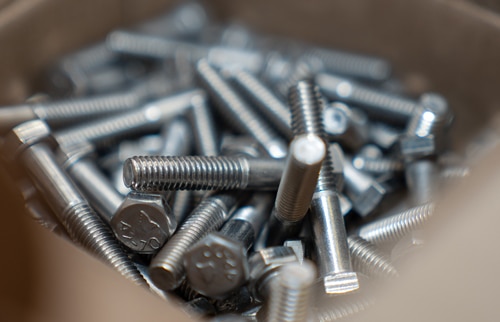
Of all the various steels available, stainless steel is by far the most useful. Technically an alloy, stainless steel includes a minimum of 10.5% chromium in its makeup. This gives it a high resistance to corrosion, making it a valuable choice across many industries.
Why plate stainless steel?

It’s a good question – if stainless steel is naturally corrosion-resistant, why go to the trouble of plating it? Well, plating isn’t always for protection. Sometimes we plate for cosmetic reasons – gold- and silver-plated steel are common commissions, for instance. Sometimes we need to impart certain characteristics to the components that are not present in stainless steel. For example, we often plate stainless steel with nickel to improve conductivity for computer components.

What metals can you plate stainless steel with?

Stainless steel acts as an effective substrate for most plating procedures. These include:
1.
Copper
mainly used for its superb conductive properties, copper-plated stainless steel is used for printed circuits and semiconductors and printed circuits. To improve adhesion, you can put down a layer of nickel before plating with copper.
2.
Silver
as well as its decorative qualities, silver has excellent anti-galling and lubrication properties. This makes it a reliable choice for plating threaded stainless steel components. It also improves on torque settings, making it a popular plating solution in the automotive industry.
3.
Tin
Tin-plated stainless steel has a wide range of uses. Tin is non-toxic, corrosion-resistant, and ductile, making it a highly versatile metal for all kinds of applications. Popular in the electronics industry as a way to improve solderability, tin is frequently used to plate threaded stainless steel components. These are much prized in the automotive sector, where they aid with torque settings.
4.
Nickel
once again, nickel improves corrosion-resistance and conductivity, as well as radiation-resistance. It is also highly durable and can be coating to any thickness, leaving a smooth and even coating. It is used frequently in the automotive industry, as well as the oil and gas sector.
5.
Gold
gold-plated stainless steel has aesthetic appeal, of course, but its main practical use is in the electronics industry. Thanks to its high conductivity, gold is frequently used for connectors, switches, contacts, and more.



